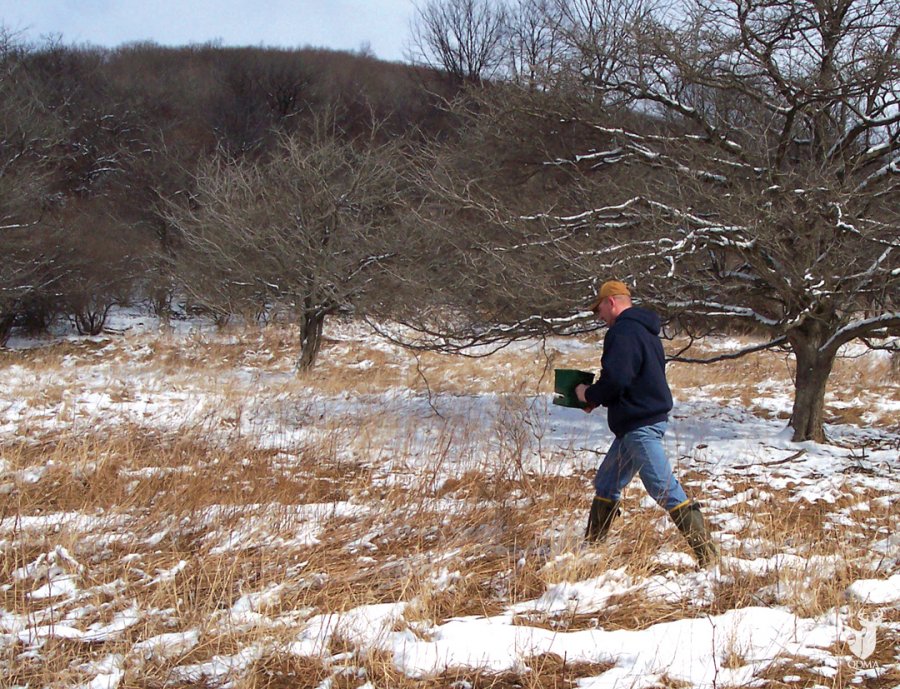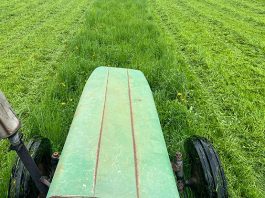Reader Question:
Is it possible to overseed alfalfa into existing permanent pasture? We have clover that is coming in but alfalfa greens up faster in spring, survives our summer heat and lasts longer in fall. I was thinking adding about 10% alfalfa might be a huge improvement. We need higher quality feed for our sheep flock now that our production is better. I can’t easily plow up and replant though due to the orchard trees we graze under. Most of the articles I find talk about adding clover not alfalfa.
Here’s the Answer:
Clover is a better choice in this situation than alfalfa, for several reasons. In planting alfalfa, it’s usually more economical to start fresh with conventional tillage and seedbed preparation. Alfalfa seed runs more expensive than clover, and the seedlings are slow starters and easily outcompeted by already established species. So you would get mixed-to-poor results for the money spent in trying to interseed alfalfa. Although they are not as drought tolerant, a mix of red and white clovers would be a better choice of legume. Their summer productivity will still be strong and the taproot system is also good for mining water and nutrients during drier times. They can also tolerate wetter soils than alfalfa.
Alfalfa requires longer rest periods than other species, averaging 30 days. If you were going to graze a mix that includes alfalfa, you would have to have a strict rotational grazing system in place to allow for the recovery time alfalfa needs.

One of the best ways to introduce legumes to a pasture is frost-seeding: broadcasting the seed onto a thin pasture in late winter, at a time when the ground will be freezing overnight and thawing during the day. This frost heaving action helps work the seeds into the ground and improve seed-to-soil contact, so they are ready to establish as soon as the soil warms up in the spring. It’s also considered more economical than no-till drilling. Alfalfa seeds are larger than clover seeds, which have the ideal small, round shape for this application, and again they get off to a slower start – not a good thing in the midst of the spring growth flush.
The best way to get alfalfa going is from scratch. If you were really determined to have alfalfa in this situation (and given that you cannot plow) you would have to spray and kill the existing stand and establish alfalfa or an alfalfa-grass mix into the residue with a no-till drill. If this were not a permanent pasture and the stand were quite thin, you could spray the existing stand to just to suppress it and no-till drill the alfalfa into it. Two very common mistakes in this form of no-till establishment is a) not doing enough suppression of the existing stand and b) planting at the wrong depth. Most small seeds like alfalfa and grasses still need to make good contact with the soil, but should go in no deeper than 3/8 inch.
 The ideal option for your situation, however, seems to be frost-seeding a blend of red and white clovers in late winter. White clover grows in a stoloniferous, spreading pattern, helping to fill in sparse areas, while red clover complements it with higher yields. If you feel strongly about having some alfalfa, you can include a little with the clover as you frost seed – 2-3 pounds/acre along with 3-4 pounds of clover – but know that you may not see the alfalfa. The important thing is minimizing the risk with this risky seeding.
The ideal option for your situation, however, seems to be frost-seeding a blend of red and white clovers in late winter. White clover grows in a stoloniferous, spreading pattern, helping to fill in sparse areas, while red clover complements it with higher yields. If you feel strongly about having some alfalfa, you can include a little with the clover as you frost seed – 2-3 pounds/acre along with 3-4 pounds of clover – but know that you may not see the alfalfa. The important thing is minimizing the risk with this risky seeding.
In terms of the overall quality of the pasture, legumes aren’t the only consideration. Make sure you’re choosing high quality genetics and improved grass products. Many species, like soft-leaf, endophyte-free or –friendly tall fescue, perennial ryegrasses, and orchardgrass can be excellent feed high in energy and digestible fiber, if they are managed correctly and grazed before heading. Chicory also works well in a mix for sheep. If you have a good mix of a handful of different species, individual species will express themselves and shine – in growth and high nutritional quality – at various times throughout the year.
Be sure to pay attention to your soil tests – many grass pastures naturally have a lower soil pH and phosphorus level than would be ideal for legumes. Maintaining the balance of species that you want will mean continuing to monitor soil fertility levels, and paying attention to grazing heights. Shorter grazing often favors legumes.
Want More About Frost Seeding?
We have a few articles for you. Here you go!




